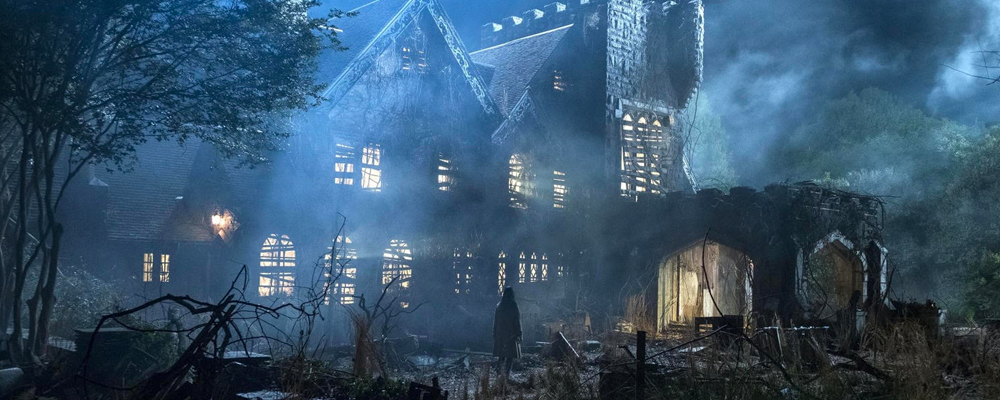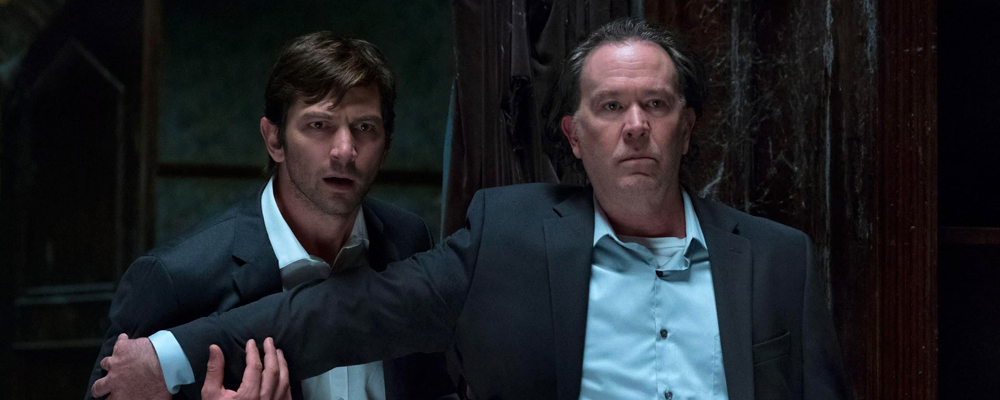Netflix’s ‘The Haunting of Hill House’ Finds the Deeper Drama Within a Classic Tale of Horror
Alci Rengifo
Netflix’s new slow burner, “The Haunting of Hill House” should avoid any pretense of being an adaptation. The only thing it has fully in common with the original 1959 novel by Shirley Jackson is the title. But horror fans need not despair. This is still a strong miniseries with a unique approach. Writer/director Mike Flanagan combines the classic themes of ghouls and terrors with a deeper angle about family trauma. Like few other shows this season, this one balances drama with boo moments impressively.
We meet the Crain family, which has been traumatized for years following their time living at Hill House. Their memories still occasionally creeped on by memories of vague, possibly supernatural happenings, the Crain siblings are now grown and attempting to live somewhat stable lives. Steven (Michiel Huisman) works as a sort of paranormal investigator, answering calls by clients claiming to be suffering from some sort of ghostly menace. Shirley (Elizabeth Reaser) is a frigid funeral director who specializes in explaining to young family members the process of mourning. Theodora (Kate Siegel) is the opposite, preferring to spend her time having one night stands with female partners she finds attractive. Yet Theodora also feels she has the ability to sense other forces, or to even foresee events. The remaining siblings, Luke (Oliver Jackson-Cohen) and Nelly (Victoria Pedretti), are themselves lost as Luke dabbles in heavy drug use and Nelly calls Steven, apparently needing urgent help. The dark history that binds the siblings is their time at Hill House was marked by terrifying events with unknown powers which wrought havoc on their parents, Hugh (Henry Thomas) and Olivia (Carla Gugino). Once they escaped the house they lost Olivia and the family has been scarred ever since. Making things worse was Steven’s decision to publish a novel based on their experiences. But now, little by little, the darkness at Hill House is calling the siblings back.
While the ads for “The Haunting of Hill House” are selling you a ghost story, and it is one indeed, what makes this version engaging is how Flanagan explores family trauma. The horror genre has such a unique power because it likes to conjure our basic, human fears with imagined terrors. As the miniseries opens the Crains function like any family that has experienced a murder, horrific accident or other calamity. Here the substitute for any of those experiences is a supernatural encounter. For the diehard horror fan enjoying this series could take a bit of patience as it takes a while to get to the real scary movie elements. The first few episodes are all about introducing the Crains. We get to know each sibling individually, as well as their father, played in the present by Timothy Hutton. To add some classic suspense Flanagan cuts back and forth between the present and the past, showing us what the siblings remember experiencing at Hill House. Someone in the present will take a drink from a glass of water and we’re suddenly in the past. But the spooky moments in the flashbacks are superbly done. A character will be in bed and feel an arm wrap around them, thinking it’s their siblings, only to turn and see a terrifying specter. Some of the best moments, as with much great horror, are when Flanagan builds tension by not letting us see much. Like a scene where a young Luke is lowered in a rusty old kitchen elevator and finds something horrific in the bowels of the house.
Some of the eerier material can actually be quite human. At times Flanagan will let an episode divert from the central plot of the Hill House and its demons. In one strong episode Shirley investigates the case of a girl who claims to see a smiling apparition, but what may really be going on is child abuse. Steven will interview a woman convinced she is seeing her dead husband appear to her at night, but he concludes there may be other factors. Yet these episodes always leave open the door to answers that go beyond earthbound explanations. Flanagan’s previous film work includes “Quija: Origin of Evil,” considered far superior to its notoriously bad predecessor and “Oculus,” an atmospheric attempt at combining a murder mystery with a ghost story. In this series-length effort for Netflix, Flanagan finally has space to combine his interests into a story where there is enough space to explore it all.
Yet the central character can be said to be Hill House itself. Flanagan does not forget the roots of the story and with his production design team conjures a gothic, multi-floor home with menacing corners, spiraling stairways and beautiful features that could be hiding something horrific. Whenever this story has been adapted for the big screen, as in Peter Weir’s classic “The Haunting” and its less than impressive 1999 remake, it is the house that sets the atmosphere. In “The Haunting of Hill House” the home is like a chamber of terrible memories. By flashing back to the past, as the siblings prepare to confront their demons again in the present, Flanagan turns Hill House into a representation of places that have left us marked in life, to which we’re not too anxious to return. Adding to the unnerving environment are Annabeth Gish and Robert Longstreet and Mr. and Mrs. Dudley, the caretakers of the house who always seem to know some unsettling secret.
The crescendo of the series is when fans of more classic varieties of horror will get what they’ve been waiting for as the siblings decide to face off once and for all with the darkness tormenting their memories. But “The Haunting of Hill House” is surprisingly more valuable as a family drama, exploring the darker side of sharing certain experiences with our loved ones, and how it’s never easy to just let go.
“The Haunting of Hill House” premieres Oct. 12 on Netflix.




